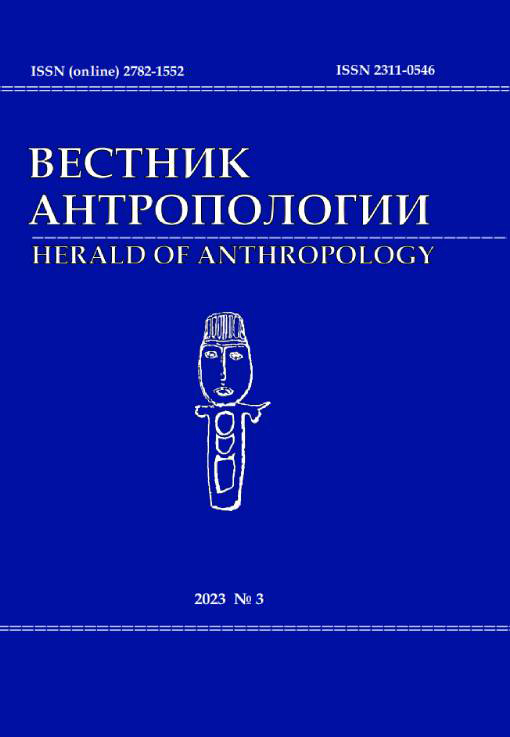Skidding Vehicles of the Mordvins
DOI: 10.33876/2311-0546/2023-3/68-85
Keywords:
vehicles, sledges, Mordvins, everyday life, holidays, rituals, folkloreAbstract
Skidding vehicles are the most ancient type of land transport in Mordovia. Depending on the purposes of their use, there are distinguished: drovni, salazki, sanochki, podsanki, rozvalni, cargo sledge, ordinary sledge, sledge-koshevni (koshevki), sledge-kibitka, etc – all these are various kinds of sledges. The initial form of skidding transport is a volokushi – a travois (simple or complex). Drovni-sledge is the most archaic form of winter wagons with runners (Moksh. nurda pei, Erz. nurdo pei*) used for the transportation of various goods. Drovni with podsanki were called "nurda potsanka". The "kerem-nurda" sledges were used to transport lighter loads and long-distance trips for household reasons. Manual sleds, "nurdonya" (Moksh.), were made to transport small goods and to use in household. Sledge-koshevki were used for short trips: making visits, going to weddings, during Maslenitsa celebration; kibitki were more often used for long-distance travelling and as a wedding wagon "on-ava" (Moksh., Erz.). Cheap sledges were sheathed with rush matting, better ones with wicker mats. Simple sledges were made at home, while professional sledgers manufactured sledges for sale. Sledging among the Mordvins was widespread, not only in the Mordovian region, but also far beyond its borders (Saratov, Kemerovo region, Krasnoyarsk Krai, etc.). Craftsmen also prepared improved sledges for the wealthy and urban population. Local drivers, mail deliverers, fire services, etc. needed them. Skidding vehicles left a mark in the folklore of Mordvins: there are sayings, proverbs, songs about them. Customs and holidays are associated with them. In the Mordovian language, the main details of a sledge had their own names: nurda pei (Moksh.) – the hoof; nurda polaz (Moksh.) – the runners; nurda prya (Moksh.) – the front; nurda syalinya (Moksh.) – the binding for the runners, var vasta (Moksh.) – the coachman's seat; nurdo prya (Erz.) – the front; nurdo skids (Erz.) – the runners. Currently, traditional skidding transport as an integral element of everyday life has almost disappeared, but many tourist destinations are associated with horse-drawn sledge rides, they persist as entertainment during various winter holidays and rituals. The skidding vehicles in these cases are often of industrial production.





















